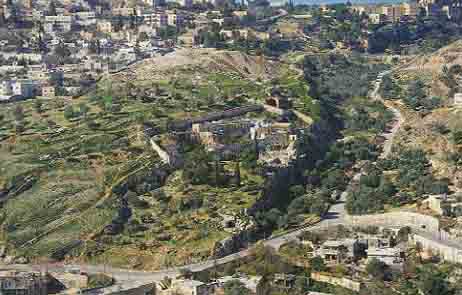Image Details

Courtesy Gideon Avni and Zvi Greenhut
Potter’s field? Three burial caves in the area known as Akeldama (below the St. Onophrius Monastery, where the road meets the white cliff-face at bottom center of photo) were discovered by workmen widening a road. The extensive caves and inner chambers, the elegant architectural details and the rich collection of fine pottery, jewelry, glass vessels and oil lamps lying among the bones indicate that this site could not have been the “potter’s field” referred to in Matthew 27:7–10, where “strangers” were buried. Instead, it appears that prosperous, influential Jews of the late Second Temple period (first century C.E. to 70 C.E.) built lavish family tombs with entrances facing north across the Hinnom Valley to the Temple Mount (not visible, to the upper right in photo). Later, these burial caves were used by Romans from the second to fourth centuries and by Christians during the early Byzantine period (fifth and sixth centuries).
